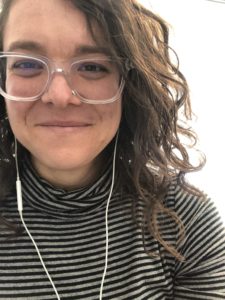
Using Self-Disclosure to Close the Distance
Hi friends. As I and others have reflected on in recent posts, our students have been experiencing not simply the typical challenges of online education, under the best of conditions: difficulty with time management, lack of motivation, glitchy or unavailable or prohibitively expensive technology; they’re also experiencing a lack of connection. My students liked being in class: they enjoyed sharing space with each other; they wanted the chance to interact with me. And it wasn’t just them; I really missed the in-person experience too.
Today, I want to offer the concept of “self-disclosure” up for consideration, as one frame for thinking about closing such connection gaps, which have only been exacerbated by these times of distancing and isolation. There are lots of different definitions of this term, “self disclosure”; I personally like the one I found on YouTube from a Communication Studies instructor who said that “self-disclosure is the process of deliberately revealing significant information about oneself that would not be normally known by others.” To repeat, “self-disclosure is the process of deliberately revealing significant information about oneself that would not be normally known by others.”
There are, I admit, risks to this kind of self-disclosure in the educational context, for instance, a loss of credibility in the eyes of some students, depending on the significant information shared; apparently, studies have shown that students don’t exactly appreciate hearing about their instructors’ drinking habits! Who would have guessed? But research has also found a lot of benefits too. Self-disclosure can signal the values of openness and humility, it can foster interest and motivation, it can increase the activity in a class, and it can even improve final course evaluations. But, for our current context, I want to focus on another one of its many benefits: that self-disclosure can humanize everyone involved in the learning process and can therefore help to create connections—connections that have been so compromised by the coronavirus. We can, as Rick Moody recently wrote in The New Yorker, “try to cause the humanness to shine through the ones and zeroes.”
This revealing of information, on the parts of faculty and students alike, has already been occurring in various ways in our courses, even at the most “normal” of times, from what the syllabus communicates about us as instructors (i.e., our values, our personality, our pedagogy) to what we (think we) learn about individual students through disability accommodation requests that we may receive. In the past, I’ve certainly shared a variety of significant information about myself that my students would not have otherwise known: the time I took a trip, on my own, to India, between my junior and senior year of college; my positive experience with the meditation app Headspace; my great love, borderline obsession, with extra toasty Cheez-its (and yes, this does count as significant piece of information about me). It’s happening now too, online, when cats or kids pop up onto screens; when I wear my Colgate sweatshirt to teach synchronous sessions on Zoom rather than normal work attire; when students mention how bored and out of sorts they are. But such self-disclosure has always seemed a bit impulsive or haphazard. In these times of crisis, I’m suggesting we try to be more intentional about it.
The literature on self-disclosure offers various recommendations for how to be effective, some of which seem beside the point to me right now, for instance, making sure to relate it to your course content or trying to vary the topics and timing. The recommendations I’m gravitating toward the most, right now, are the ones that say: be honest, be authentic, be vulnerable. If you’re struggling, let students know. If you’re worried, tell them. If you’re tired or stressed or overwhelmed or uncertain, don’t feel like you have to keep it to yourself under the guise and pressures of professionalism. We all know those standards are biased anyway. Be real. This can let students know they’re not alone. It can model how to handle ambiguity or difficulty. It can create connections, between actual human beings, which is precisely what we all need right now. Thank you.
Leave a Reply